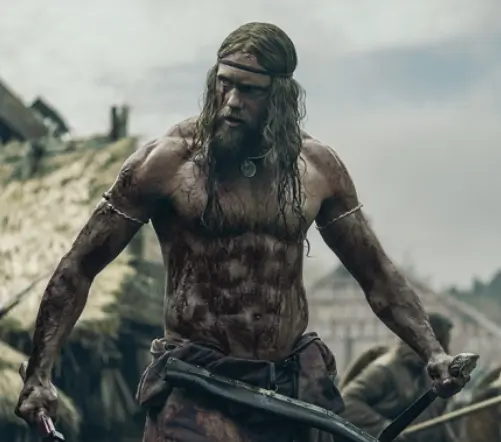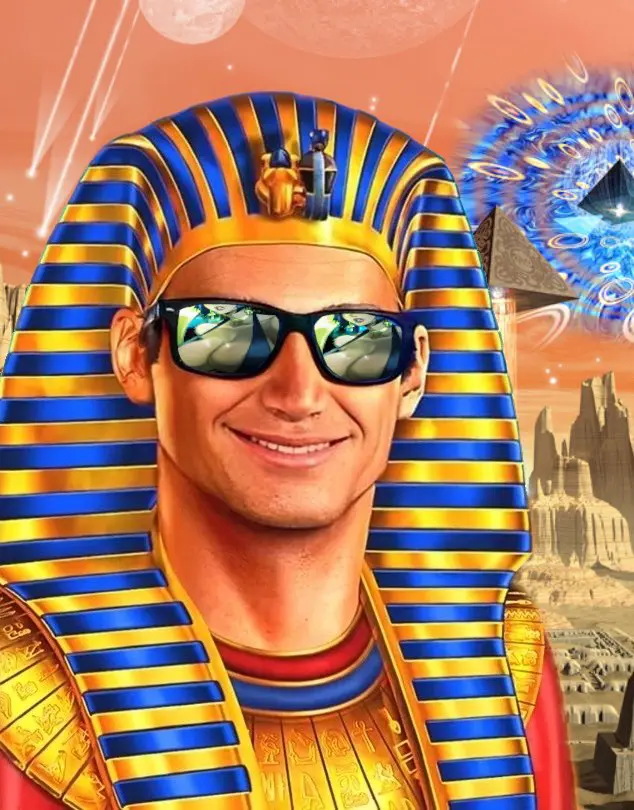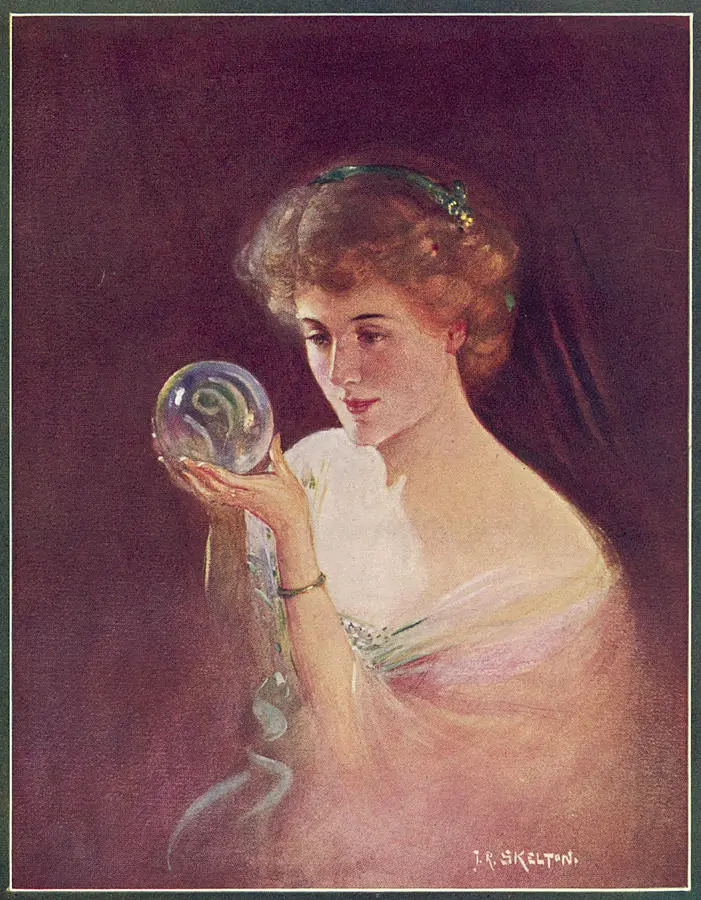A Film Review of THE NORTHMAN
Cover image courtesy of variety.com
A few weeks ago, I went and watched the new movie called The Northman at a local cinema complex down at the nearest shopping mall. Prior to watching this film, I read a few articles that discussed this cinematic release, and I watched the trailer as well.
As for the film itself, it was good, but I would not say that it was quite the cinematic masterpiece that some people billed it to be. Despite not being quite the masterpiece that it was billed to be, this film is still quite a valuable cultural item for our present time.
The Northman was produced by a list of people, but the most notable name on the producer’s list was Mark Huffam who is famous for producing Game of Thrones, which is an international hit television series. The idea for this film originated with Alexander Skarsgard, who is the actor that played Amleth, and Amleth is main character in this film. Skarsgard petitioned the American film director Robert Eggers to work with him to make a Viking themed movie for several years, then in October 2019 the project began after sufficient funds were raised and a cast was assembled. The Northman was Eggers’ third directorial effort, with is two previous films being 2015’s The Witch and 2019’s The Lighthouse.
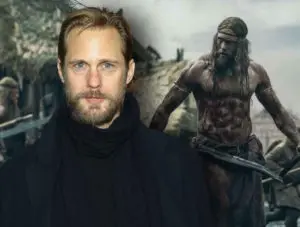
Image of Alexander Skaarsgaard courtesy of the parisbeacon.com

Image of Robert Eggers courtesy of indiewire.com

Image courtesy of shopemilym on etsy.com
Both of Eggers’ previous films told stories that took place in historical settings, and Eggers has acquired a reputation for meticulously researching the times and locations where each of his two previous films were set. Eggers always wants to ensure as much historical accuracy as possible in his films, and the Northman is certainly no exception.
Yet another prop that The Northman deserves is the fact that the creators of this film actually did their homework and went to great lengths to ensure that the setting for this film was as historically accurate as possible. On the other side of the coin, Jewish Hollywood is notorious for proffering outright lies about history, such as when they go about their mendacious agenda pushing the Holocaust™ narrative in films such as Shindler’s List. Certainly, the Jews that run Hollywood habitually produce movies with settings that outright falsify history, but this same nasally prominent bunch is also guilty of plain old sloppiness when it comes to ensuring historical accuracy in their films; therefore, it is nice to know that the producer and the leading actor for the Northman both did their due diligence to ensure that the props, costumes, settings, and cultural practices depicted in this film were as true to history as possible.
It seems that there is presently a bit of a fashionable fondness for all things Viking, as illustrated by the popularity of a television show called The Vikings, which saw its final episode air in 2020. However, as of the time of this writing, a spin-off from the original Vikings television series called Vikings: Valhalla is now airing, and another Viking themed television show called The Last Kingdom has also been recently released. A German television show called Barbarians, which chronicles ancient German wars against the Romans, is additionally available for streaming at this time. Indeed, there seems to be a bit of pop-culture interest in Vikings these days, despite the fact that this sort of thing makes Jews and other non-Whites a bit uneasy. The release of an ambitious feature film that is set in the Viking genre seems to be connected with this recent trend of producing fashionable Viking stories.
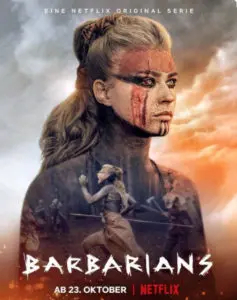
Image courtesy of Pinterest.com
Making The Northman was Somewhat of a Gutsy Move in Today’s Social Climate
So, what makes this film a noteworthy cultural item for our time? In answer to that question, the Northman is a valuable film for this day and age because it eschews so many of the cultural-Marxist tropes that infect almost all Hollywood movies these days, plus it nourishes and supports a slowly building sense of White identity that the Jews and others have been trying so hard to snuff. In our present day, international Jewry has been working towards their goal of erasing European people, erasing European culture, and erasing European genetics in a febrile manner, so any cultural phenomenon that bolsters a sense of White identity inevitably meets with an astounding onslaught of Hebrew institutional rancor. To put it another way, making a pop-culture foray into matters of pre-Christian European identity, and particularly pre-Christian Germanic identity, is stumbling into a political minefield these days.
Pre-Christian European identity includes the “Swords and Sandals” Greek and Roman genres which constitute less intense political hot-buttons; however, any dealings with pre-Christian Germanic identity inevitably causes untold consternation amongst Jews and other non-Whites. For whatever the reason, non-Whites find stories told within the Greek and Roman settings a whole lot less threatening than sagas about Vikings.
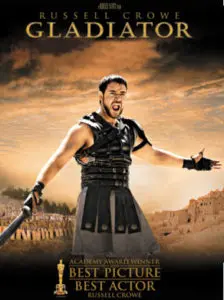
Promotional poster from the movie Gladiator courtesy of ebay.com
So why are tales about Vikings so threatening to Jews and other non-Whites? It seems that Jews and other non-Whites get very uncomfortable with pre-Christian Germanic identity, such as the whole Viking genre, because the prospect of National Socialism rising again amongst Germanic peoples around the world represents the arrival of a force that Jews and other non-Whites cannot easily stop nor control. It appears that as far as Jews are concerned, any time Northern European people start to explore and express their pre-Christian roots and pre-Christian identity this constitutes a prelude to Swastika banners decorating buildings and Jews getting righteously purged from all of the institutional positions which they have hijacked.

Image courtesy of knowyourmeme.com
In other words, there is a tremendous fear that Northern European people just might start to get off of their knees and begin to act in their own interests once more, which means that fitting reprisals will finally be coming for Jews. Germanic people regaining pride in themselves and getting off of their knees also spells trouble for Blacks because their current gravy train ride of free socialist giveaways that arrive courtesy of Whites might stop running — imagine if all of America’s Blacks suddenly lost every one of their present welfare handouts! Also imagine if all of America’s Blacks suddenly lost every last bit of their preferential treatment for hiring practices, university admissions, bank loans, and government contracting! Heaven Forbid!! Hitler and the 3rd Reich were very intent on reviving pre-Christian Germanic traditions and pre-Christian Germanic ways, so it should come as no surprise that Jews and others fear any possible revival in pre-Christian Germanic identity.
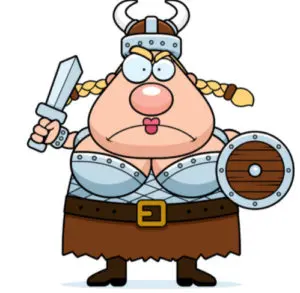
Image courtesy of clipart-library.com
Whether we like it or not, anything to do with Vikings or living a pre-Christian Germanic life style is now slapped with a label that reads “Nazi-ism,” by the likes of Blacks, Jews, and a long list of others, and unfortunately, pre-Christian Slavic identity seems to be headed in the same direction. So, in light of today’s political climate, kudos are due to the Northman’s producers, director, and stars for damning the torpedoes and electing to charge ahead on this project. Unfortunately, Jewry has managed to take control of countless institutions across entirely too many nations, and this has been the state of affairs for quite a while now in such places as England, the United States, and Germany.
Jewish institutional hijacking includes stolen and hegemonic control of the entertainment industry, the public education system from kindergarten to post-doctorate programs, the banking system, and a host of other societal sectors, so going against Jewish narratives carried some real risks. In decaying Western nations, the Jews have harnessed their hijacked institutional pull to construct a hegemonic anti-European cultural zeitgeist which packs deadly consequences for European people. The shocking prevalence of attacks, vilification, and perfidy leveled against European people in general, and Germanic people in particular, by powerful Jewish interests makes the arrival of the Northman a welcome counterpunch to the endless tide of Jewish attacks against Germanic people.
A People Without a Culture or a History Will Parish
Not too long ago, I remember watching a video that was posted on the Vertigo Politix YouTube channel that discussed how Jewish oligarchs have been leveraging their vast pools of money to buy as many works of European art as possible so that these masterpieces will not be seen again by any native Europeans. According to this video, stratospherically priced art purchases made by Jews are part of a much larger campaign to erase any European sense of identity, roots, and culture. International Jewry is presently working so hard to erase any sense of European identity because they know that a people which lacks a strong sense of identity will not be properly motivated to defend their living spaces nor their genetic integrity; however, cultural works that bolster a sense of unique identity for Europeans, such as The Northman, serve as good medicine against this agenda. In the end, the Jews may succeed in destroying many great European masterpieces of art; regardless, new European works of art such as The Northman are also being created, so this nefarious Hebrew agenda will not work as well as planned.
In light of the current Jewish attempts to destroy European culture and the people who are biologically connected to this culture, it is now more important than ever for European people to have a solid connection to their past. Luckily, The Northman helps European people regain a sense of identity that Jews have tried to strip from them.
Props to The Northman
One good thing to say about The Northman is that this film avoids so many of the common and rotten tropes that infest contemporary Hollywood movies. One of the tropes that The Northman avoids is the present tendency for Jewish Hollywood to insert non-European characters into stories that are acknowledgeable period pieces which are set in one European historical era or another. In recent times, there have been television period pieces produced by the British Broadcasting Company, or the BBC is it is commonly known, which have cast a Black actress as Henry VII’s second wife Anne Boleyn, and also cast a Black actress named Sophie Okonedo as Henry VII’s other wife, Margaret of Anjou. Margaret of Anjou was the queen of England from 1445-1461. Luckily, the Northman has an all-White cast of actors and actresses and does not follow the crummy Jewish Hollywood trend of wrongfully distorting the racial makeup of European history.
The Northman also avoids the long-running and idiotic Hollywood practice of casting women in what are essentially masculine roles. What is meant by this? Think about the old James Cameron movie Aliens, in this movie, there was a coed combat unit and a Hispanic woman named private Vasquez was the toughest and most courageous character in the movie while the men were often portrayed as both incompetent and cowardly. James Cameron also continued with the Hollywood concept of exceptional female combatants with the character Sarah Connor who appeared in his Terminator movie series. Besides James Cameron’s films, Hollywood is filled with silly action sequences where male and female characters are seen duking it out as equals, which is really downright ridiculous.

Image of Private Vasquez courtesy of sentinel63.wordpress.com

The image above shows the character Sarah Connor as she appeared in James Cameron’s movie terminator 2. The character Sarah Connor was played by the actress Linda Hamilton. The character Sarah Connor is worthy of mention here because she is such a shining example Hollywood’s daft trope about female combatants. Image courtesy of kqed.org
This trend of casting women as mighty warriors and paragons of courage under fire seems quite popular in Hollywood, except if one reads the book called Co-Ed Combat: New Evidence That Women Shouldn’t Fight the Nation’s Wars by Kingsley Browne, it becomes clear that women are generally not the ones who show great courage and selflessness in crisis situations, whether these difficult situations are combat, accidents, or natural disasters.
Kingsley’s book arrives at its conclusions by referencing tens of thousands of emergency situations spanning several decades. Kingsley’s book is also an eye-opener in the sense that is sheds a lot of light on the chasm-like differences in physical abilities between men and women. For example, pretty much all weight lifting world records for men and women differ by HUNDREDS OF POUNDS! Another example of the profound physical differences between men and women is the fact that at any given large marathon, the fastest man typically finished the race about 20 minutes earlier and around 2.6 miles ahead of the fastest woman.
Truth is, back in the days when combat was a matter of swinging bladed weapons of firing arrows, women would be horribly overmatched when pitted against men. Luckily, The Northman avoids the usual unrealistic Hollywood Jewish troupes of women fighting with men as equals; indeed, there were no female combatants depicted anywhere in The Northman.
Virtues of the Viking Era
Today’s pagan revival movement is also commonly associated with such people as Steven McNallen from the Asatru Folk Assembly.
The BitChute vlogger named Steve Turley also noted that The Northman was not only as true as possible to its historical setting, but this film also never attempted to portray the characters as being modern people who just happened to be going about their business in a historical setting. As Turley rightly points out, the characters in The Northman operate on a set of sensibilities that are very different from people living today. Undeniably, Turley is correct, people who were living during the Viking era were living their lives within a very different moral and spiritual framework than we do today, but is this a categorically good thing?
https://www.bitchute.com/video/beE5dkLONvM/
The video posted above is Steve Turley’s discussion about The Northman.
One could certainly argue that people who lived within the time period of Scandinavia’s “Viking Era” probably has virtues that people living today seem to lack, such as a high respect for courage in battle, a solid sense of masculinity for men, and a solid sense of femininity for women. Part of today’s fascination with Vikings most likely stems from the fact that so many men now feel that their lives are devoid of the type of raw European masculinity which the Vikings seem to embody.
Another good thing that could be said for the Viking era was the fact that this society not only rewarded and valued raw masculinity, but the constant blood feuding, dueling, diseases, and endless tribal warfare also did their part to keep the Scandinavian gene pool quite clean and healthy. The sorts of violent and unsanitary living conditions that were endemic to the Viking era selected for true alpha males, which is unlike the modern West that seems to be promoting the most dysgenic breeding practices imaginable. Sure, modern medicine is nice to have, (Who would not want to go to the nearest emergency room when badly injured?) but modern medical technology combined with a bloated welfare system on top of a state monopoly for violence all contribute to promoting survival of the most unfit, and this survival of the truly unfit is now beginning to manifest in increasing levels of mental and physical sickness across all of society. If the present dysgenics problem is not properly addressed, then many intellectuals have postulated that West’s current regimen of genetic degradation will slowly usher in the end of all of the world’s high civilization.

Image courtesy of ifunny.co
It seems that when so many people living in Western nations today live very dull yet comfortable lives some part of their psyches grows restless whether they are consciously aware of this fact or not. Sure, nobody really enjoys facing genuine hardships, but the absence of real struggles fills our lives with too much ennui and invites existential angst to creep in the back door. Easy lives also invite a certain amount of discontent because comfort and security bring about as surplus of time to ponder questions that a person who is simply struggling to survive during Viking times would probably never bother to ask.
For many bored men living in the modern world that reside in suburbs or cities and work in offices, the idea of riding a sailing ship across salty waves and showing fierce courage in battles involving bladed weapons has its appeal because this way of being represents a raw vitality that their predictable and comfortable lives can never deliver. We should also stop and consider if living a long and comfortable life is really what the divine wants us to do, instead we should ask ourselves, “What is the real value of living a life that is comfortable but pointless and dull?” Dr. Edward Dutton also produced an interesting and informative video that postulates the idea that if humans are to truly live meaningful and stimulating lives, then they must be willing to fully embrace death.
https://www.bitchute.com/video/qHdyrBhBvAWO/
The video posted above discusses the need to embrace death in order to live fully.
The Viking genre also appeals to modern people who live in comfortable suburbs and city dwellings because the Viking setting represents a connectivity with nature that is missing for many people living today. Unlike in modern times, people living during the Viking era saw the world around them as a magical place that was populated with spirits of all types, such as the spirits that are connected with certain places along with mystical creatures like elves and trolls. Perhaps many people alive today would claim that people living as Vikings were superstitious and ignorant, and there is some truth to this point of view, yet the Vikings had a deep connection to the natural word that has been largely lost today.
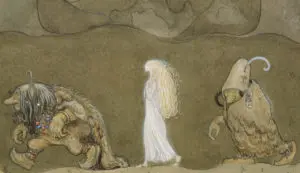
Image of trolls courtesy of folklorethursday.com
Problems with the Viking Era
The previously published article about today’s fashionable new paganism revival documents and analyzes the positive and beneficial aspects of this trend, yet to this date no article has been written which outlines some of the very real downsides of this movement. Kevin McDonald wrote a great and perspicacious article about The Northman that he published on The Occidental Observer website. In his article, McDonald pointed out that many of peoples’ romantic ideas about the Viking era must be tempered with harsh historical realities.

Kevin McDonald has a nice chain of restaurants that share his name. Image courtesy of eatthis.com
To its credit, The Northman does deal with the topic of slavery in a forthright manner. In the early part of this film, Amleth, who is the main character in this story, participates in a slave-capturing raid on a village in what would be today called the Ukraine. What is interesting about this part of the story is the fact that the moral framework for what is being done is not given much scrutiny. To his credit, Eggers reflects the fact that the Viking era was a radically different moral ecosystem then our present era. What could be defined by the term “different moral ecosystem”? In this context, the term a “different moral ecosystem” would describe the fact that in the Viking era the practice of slavery was a common and generally accepted practice as was the practice of taking women as war prizes.
In fact, during the course of The Northman, the audience is eventually told that Amleth’s mother was taken as a sex slave on one of his father’s coastal raids along the island of Britannia’s eastern coastline. To make matters worse, Amleth’s mother never gained any affection for Amleth’s rapey old pappy, even after having a child from her captor. Genetic analysis from contemporary times also proves that many of Iceland’s people can trace their maternal mitochondrial DNA back to England and Ireland where Icelandic Vikings stole the local women. Kevin McDonald’s previously linked article about the Northman also mentions that Viking men would routinely rape their female slaves, and these recreational rapes of captive women often happen in broad daylight and frequently with crowds of people milling about and treating such incidents with indifference. In Viking society, raping slave women was simply a leisure activity along the lines of playing golf in today’s world, but raping free women was punished quite harshly.
Make of these things what you will, but the Vikings were far from the only ones who saw captured women as legitimate prizes of war, and Muslims still see non-Muslim women as fair game for rape to this very day, as evidenced by epidemic of rape now inflicted on European women at the hands of Muslim invaders who arrive in Western countries as economic migrants which claim some sort of “refugee” status. It is also worth noting that sex slavery is still widely practiced across the Muslim world event to this day, so giving the Vikings too much of a bad rap on the issue of taking sex slaves and practicing institutionalized rape is a bit unfair becasue everyone else did the same things back in those days.
Think of it this way, the Vikings were no worse than anyone else from their time frame when it came to taking women as war prizes. It is also worth noting that the Comanche tribe of Native Americans genocided 24 other Native American tribes before the arrival of Europeans, and each time one of these genocides happened the men from the subjugated tribe were killed and the women were taken as prizes of war, so the point to remember is that the Vikings were far from the only group who took women as war plunder.
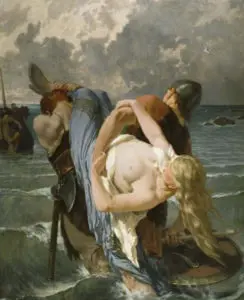
Image of a viking raider stealing himself a bride is furnished courtesy of wikipedia.org
Yes, the Vikings took women as war prizes, as did almost every other group of men in the ancient world, yet marriages between free Viking men and women were typically arranged by families, so any talk about gender equality during Viking times is really just a case of projection and wishful thinking on the part of liberal modern people. As noted by historyonthenet.com and other sources, for “free” Viking women, their marriages were typically arranged by their fathers, except fathers did typically consult with their daughters and seek their feedback when choosing husbands for them. “Free” Viking women were often permitted to choose their own husbands, but they could not marry without the approval of their fathers. Common Viking marriage practice also involved the family of the groom paying a marriage dowry to the bride’s family, so modern liberal marriage practices were not followed back then. Should any couple marry without the full approval of both families? It seems that there is some valuable wisdom in the practice of requiring family approval for a marriage to happen because as the old saying goes, “You do not just marry the person, you marry the family.”
Admittedly the practice of treating women as simple property, which entails selling them at auctions and trading them around, is not too enlightened, but we also have to look at all the problems connected with modern feminism when laying hard moral judgements on ancient ways. If nothing else, modern liberal ways concerning marriage and gender roles have created a social climate where deaths exceed births on a year-by-year basis, so modern liberal family dynamics and courtship practices are clearly not sustainable. It seems that the best way to navigate the inherent difficulties between men and women is to seek some imperfect middle ground between Iron Age sexual morals and modern feminism.
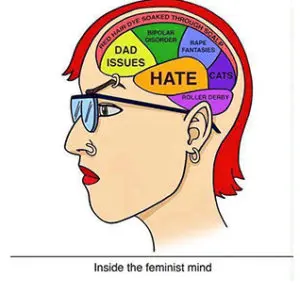
Image courtesy of theletterc.co.nz

The photo above shows a crazed street demonstration by radical feminist in Spain. Clearly these women are a group of fanatics, and fanatics cannot be reasoned with. Radical feminists such as these will eventually be taken as sex slaves by Muslims if European men do not step up and defend their nations, so feminism is really a doomed ideology whether this group of brainwashed female Marxist fanatics realize it or not. Image courtesy of theculturetrip.com
It is also worth mentioning that the Vikings were not unique in their practice of slavery; truth is, slavery was common and ubiquitous throughout every corner of the ancient world. For example, the Bible’s old testament mentions slaves countless times, plus ancient Greece and the old Roman Empire both practiced slavery very liberally. As noted in the History of Yesterday website, thriving slave trades persisted well into the Medieval and Renaissance eras in Europe. During the late Medieval period and well into the Renaissance era, the Italian cities of Venice and Genoa were major slave trading areas for captives taken from as far away as Finland and West Africa. Until its demise in 1453, the Byzantine Christian city of Constantinople functioned as a major slave trading nexus for slaves from India, Arab lands, Africa, and various parts of Europe.
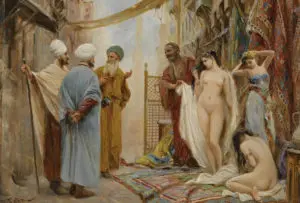
The image above was painted by the Italian artist named Fabio Fabbi. This work of art is titled The Slave Market. Image courtesy of artvee.com
As mentioned by numerous sources such as History of Yesterday, various groups of Vikings would travel around the Baltic, the North Sea, and the rivers of what is today Russia and the Ukraine and execute fast coastal slave raids. The captives from these quick and unexpected Viking coastal raids often found themselves sold to truly vile Jewish and Muslim slave traders in the Mediterranean region. An honest analysis of Viking slave trading practices reveals that the Vikings were guilty of selling their fellow Whites to Jews and Muslims for their 13 pieces of silver — this is not honorable conduct! Moreover, as much as the Vikings might be eulogized by contemporary White nationalists, the Vikings themselves did not share much of any sense of racial solidarity if they were freely selling blond slaves to Muslim and Jewish slave traders.
Yet another factor to consider was the issue of human sacrifice. Like it or not, the Vikings did in fact practice human sacrifice. As mentioned on the CJ. Adrien website and other places, human sacrifices that were done in Viking times typically involved ritually killing slaves and children. Evidence of Viking human sacrifices is noted in surviving written records from that time, but also from exhumed graves from that era. Several Viking burial sites have been examined by archeologists and the evidence reveals that when a Viking person of some importance was buried, they were often buried with an allotment of sacrificed children and slaves.
To their defense, the Vikings probably did not practice human sacrifice all that often, but they did kill other people and offer them as appeasements to their gods. Another point to consider is the fact that the Vikings were far from the only ancient people to practice human sacrifices in one form or another. If one were to discuss the topic of human sacrifice, then the Aztecs would be in a league for above the Vikings in terms of numbers. An article published livescience.com also notes that the ancient Mesopotamians, the Hawaiians, and the ancient Chinese all practiced human sacrifices to some degree or another, so human sacrifice is a common proclivity that is scattered across all of history.
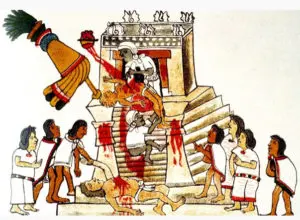
Archival image of Aztec human sacrifice courtesy of historyextra.com
When analyzing the demerits of living in the Viking era, we should also take a little bit of time to discussing the issue of endless internecine petty tribal conflicts and duels. As the movie The Northman illustrates, for a man living in the Viking era, dying from combat connected with a family or personal blood feud was a common occurrence. In Viking society, and in tribal societies in general, there was no monopoly on violence from the state, unlike in many places today, so if people wanted whatever they believed to be justice, then they had to pursue it themselves without the help of courts or lawyers. For many people living today, this sort of arrangement where “justice” is made with a sword may seem like a breath of fresh air because our present system of “justice” that is based on money, courtrooms, weedy and disingenuous lawyers, and corrupt judges often fails to punish criminals, and it often fails to truly address grievances; however, the old tribal way of seeking redress for wrongs also has its drawbacks.
In a non-state tribal society, such as what the Vikings had, people could easily pursue what they believed to be “justice” without fearing the wrath of the state, yet taking revenge for perceived insults was often anything but a straight-forward and linear matter. For example, if a murdered man’s family sought justice for the death of their relative, then they would look to take revenge on the perpetrator of this crime, but the process of pursuing justice would immediately drag the family members of the murder into the conflict as well, and then this situation would then typically degenerate into a blood feud that might last for generations and cost countless lives. Yet another problem with endless blood feuds is the fact that men in the Viking era may have frequently been dragged into a bloody internecine conflict that started over some misdeed that took place before any of them were born, yet this inherited conflict just might end their lives a bit early.
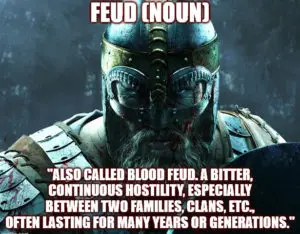
Image courtesy of imgflip.com
Jerrod Diamond’s book The World Until Yesterday: What Can We Learn from Traditional Societies?, chronicles what life was like in the hills of New Guinea before the modern world made inroads. In this book, Diamond describes how the people of New Guinea lived in what was pretty much a perpetual state of war, and every death demanded vengeance, so these conflicts were basically endless. Another factor to consider is the issue that these endless and bloody clan and tribal feuds in New Guinea were almost impossible to diffuse because hotheads on both sides would immediately restart the conflict regardless of the best peace initiatives pushed by the older men. It is worth noting that constant low-grade warfare was the norm for most people living in non-state tribal societies for the bulk of human history.
It is also worth noting at some point that Viking society did permit dueling. The earliest form of dueling was Einvigi, which was a rather crude and informal affair, but this Einvigi practice of sanctioned combat slowly progressed into the more rules-bound and codified Holmgang. As noted in the Ancient Origins website, the practice of Holmgang eventually fell out of favor because unscrupulous men would challenge those who they knew were far lesser opponents with the goal of laying claim to their land, their money, or their women. The practice of Holmgang also eventually fell out of favor because family members or friends of less capable men would agree to stand in for their less capable cohorts; however, this practice of “standing in” during sanctioned duels eventually devolved into a paid class of professional duel fighters who stood in for men who were cowardly yet wealthy.
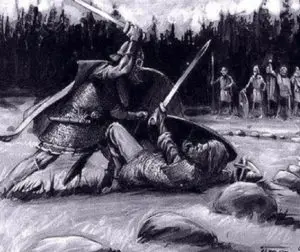
Image of a viking holmgang duel courtesy of ancientpages.com
Admittedly, for many men living today, the prospect of being able to legally challenge a disliked co-worker to a duel would sound quite welcome; yet, as previously mentioned, the practice of dueling, which is meant to make people accountable for their bad actions while also restoring honor to peoples’ conduct, was flawed in practice back then and it would be today as well. Besides the practice of dueling becoming a corrupt affair, a deeper problem with the practice of formal dueling is that men who are really good at fighting duels can leverage their dueling skills as a means of essentially justifying or offsetting the consequences for a host of bad deeds and dishonorable conduct. To put it another way, honor really cannot simply be purchased through skill with a sword, and everybody realizes this on some level.
Lastly, it is worth noting that as listed on many sources such as a posting on Skjalden.com, it was unusual for any man in the Viking era to live past about 50 years of age. In the Viking era, being 30 to 50 years old was seen as being middle aged and over 50 was seen as old. Causes of death varied, but life was generally nasty, brutish, and short for Vikings. To live in such times meant living without any of the trapping of modern medicine, so things that would be very unlikely to cause death in today’s world would have been fatal back then. For example, a relatively minor puncture would could easily lead to a deadly and fatal infection in the Viking era, yet this same problem would be easily treated with today’s medical technology. As listed on the hustwic.org website, during the Viking era, estimates assume that at least 50% of all children would not see their 7th birthday due to disease and only around 3% of all people would live past the age of 60.
The previously mentioned post on Skjalden.com also notes that around 25 percent of Viking skeletons found in archeological digs had severe tooth decay and there was certainly no dentistry around to address these issues, and other postings online mention that around 70% of all people living in that time had some type of internal parasitic infection including tapeworms, lash worms, and liver flukes. We should also note that infections from lice, ticks, scabies, fleas, and other external parasites were ubiquitous in those times because people lived in such unsanitary conditions and in such close proximity with animals of all types. We should also note that the Vikings were by no means the only ancient people who suffered from massive parasitic infections, this is known because excavations of Roman latrine pits reveal pretty much the same results.
Conclusion
This article was basically written for two reasons: First, there was a desire to at least weigh in on the The Northman as a film and offer some commentary; however, this article was primarily written as a screed to address many people’s overly romantic ideas about living during the Viking era. It seems that many people these days, particularly those claiming to be “Pagans,” have a very starry-eyed view of life during the Viking era, but such idolization of the Viking times is a bit misplaced.
Indeed, our lives these days often seem a bit stuffy, dull, and disconnected from the vital flows of nature; however, life during the Viking era was nasty, unhygienic, violent, painful, and short. Would any one of us living today really want to go back to a slave-trading economy similar to what the Vikings had? Perhaps, some would like the idea of reintroducing slavery, but slavery is only a fine and dandy way of doing things if you are not the one who has been enslaved. Would any one of us really want to return to the practice of sacrificing children in hopes of ensuring a good harvest for the next fall? Probably not. Fact is, human sacrifice is a barbaric and outmoded practice that is best relegated to the scrap heap of history and few people living today would honestly disagree.
Another factor to consider is the issue of honor culture and being forced to seek redress for grievances without the state getting involved. True, the present system of courts and lawyers is confining and a bit of a mess, but no sort of high society can develop or function if people are always killing one another over wrongs that are either real or imagined. Aside from the matter of constant feuds and revenge, no real high culture or high technology can develop in an environment rife with the constant low-grade clan and tribal warfare which was so common during Viking times. So, if we want to have things like an electrical grid, libraries, and hot showers, then we will have to accept some feminizing restraints being placed upon us by a nanny state. When a state imposes order upon the populace through a codified legal system and a virtual monopoly on violence, this does allow high civilization to develop, yet the smothering and feminizing effects of state control also rob a society of its masculinity and its vitality to some degree.

Image courtesy of quora.com
It seems that the true practice of Norse paganism is actually incompatible with a modern society, so these modern people who want to go back to being pagans are a bit misguided. The flip side to the modern paganism issue is the fact that so many people are now growing tired and restless with Christianity becasue it has become so feminized, so passive, so corrupt, so money-hungry, and so “inclusive” that they are understandably seeking a change of some type, but they are not sure what that change should be. It seems that National Socialism and esoteric Hitlerism offer a good middle ground between ancient and archaic paganism and the demands of a modern society.
In one of his past videos, Dr. E. Michael Jones offered some Catholic theologian’s commentary on the film called Midsomer, and in this commentary, Dr. Jones noted that the arrival of Roman Catholicism resulted in a huge awakening of high culture in what we would call Germany today. For all of its faults, the arrival of Christianity did bring about more centralized governments and such things as cathedrals, universities, and amazing libraries, which would have never been developed if Germany would have remained pagan. Jones’s comments ring true, if the German people would have remained pagans, then they would still be living in crude log dwellings and chasing wild pigs around the forest to this very day.
Yes indeed, modern feminized Christianity is also out of step with the natural rhythms of the universe, like all Abrahamic doctrines are, so it comes as no surprise that more people are seeking different ways of being in the world. National Socialism is the fix for the spiritual problems linked to modern life because it addresses the shortcoming of modernity yet avoids the superstition and barbarity of archaic paganism. Hitler himself noted that his intention was to modify old pagan ways and make them compatible with a modern society — that sounds like a winning formula!
